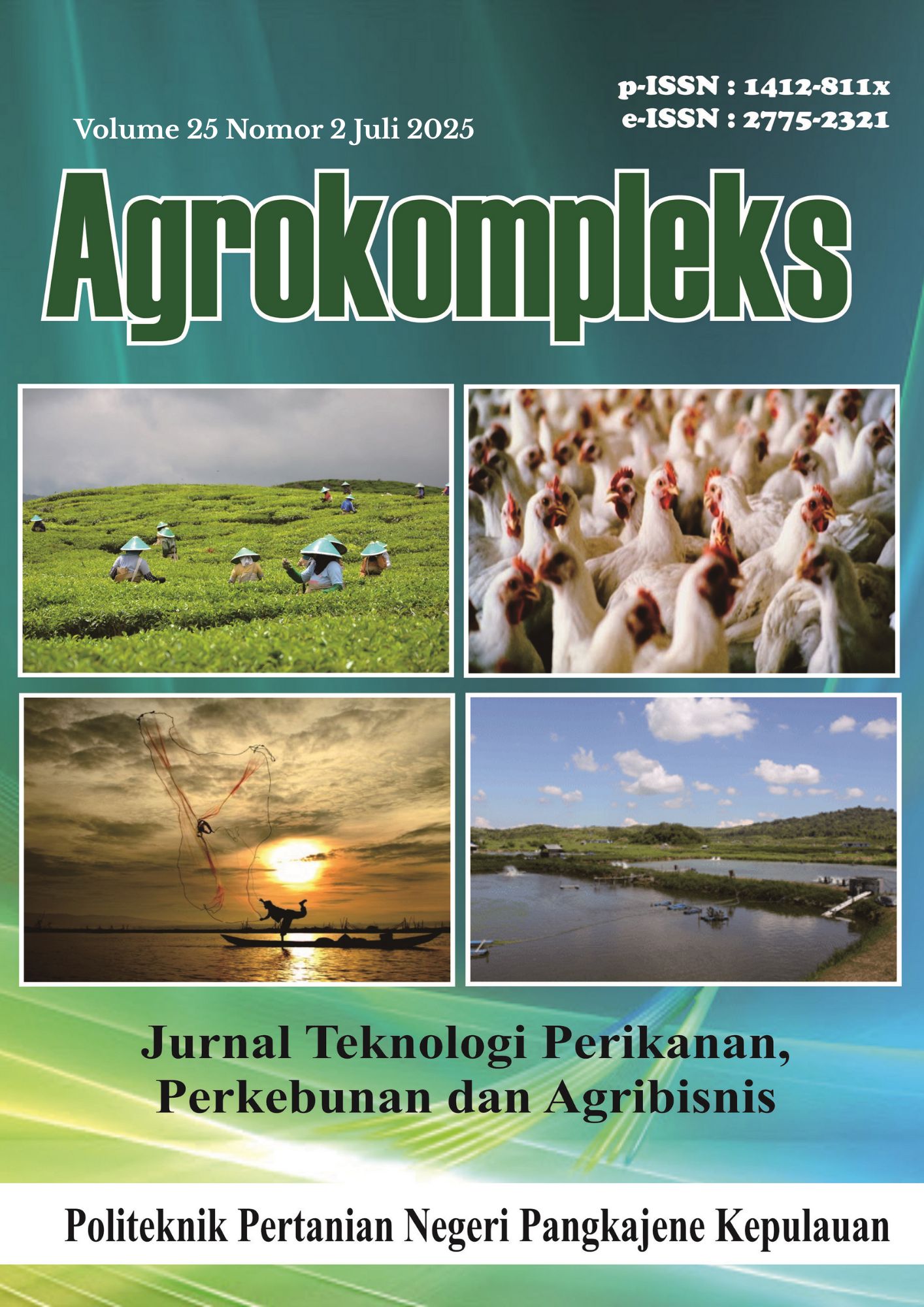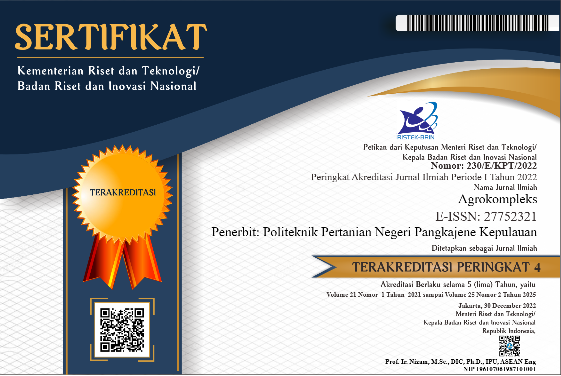Analisis hubungan klorofil dan pembagian asimilat dari aplikasi biosaka dalam pertumbuhan vegetatif tanaman melon
The correlation analysis of chlorophyll and assimilate partitioning with biosaka application under vegetative growth of melon plants
Abstract
Biosaka contains elicitor compounds that stimulate the physiological activity of plants, including increased chlorophyll content and enhanced efficiency of assimilate distribution. This study aims to examine the effect of elixitors in biosaka on leaf chlorophyll content and its relationship with the distribution of assimilates in the vegetative growth phase of melon plants. The research was conducted using an experimental method with a non-factorial Complete Random Design (CRD). The single factor in the form of biosaka concentration consists of six levels: B0 = 0 mL L⁻¹, B1 = 10 mL L⁻¹, B2 = 20 mL L⁻¹, B3 = 30 mL L⁻¹, B4 = 40 mL L⁻¹, and B5 = 50 mL L⁻¹. Each treatment was repeated four times, with each repetition consisting of three plants. The results showed that the application of biosaka at various concentrations had no significant effect on all observed parameters. Nevertheless, there is a substantial increase in plant length by up to 93% towards the end of the vegetative phase. A positive correlation was found between plant length and assimilate distribution to the crown (r = 35–47), as well as between leaf area and plant length and assimilate distribution to the crown (r = 36–77). This indicates that the application of biosaka contributes to the increase in physiological activity of plants, through an increase in leaf area that supports the process of photosynthesis and assimilation in the upper part of the plant.
Copyright (c) 2025 Agrokompleks

This work is licensed under a Creative Commons Attribution 4.0 International License.






